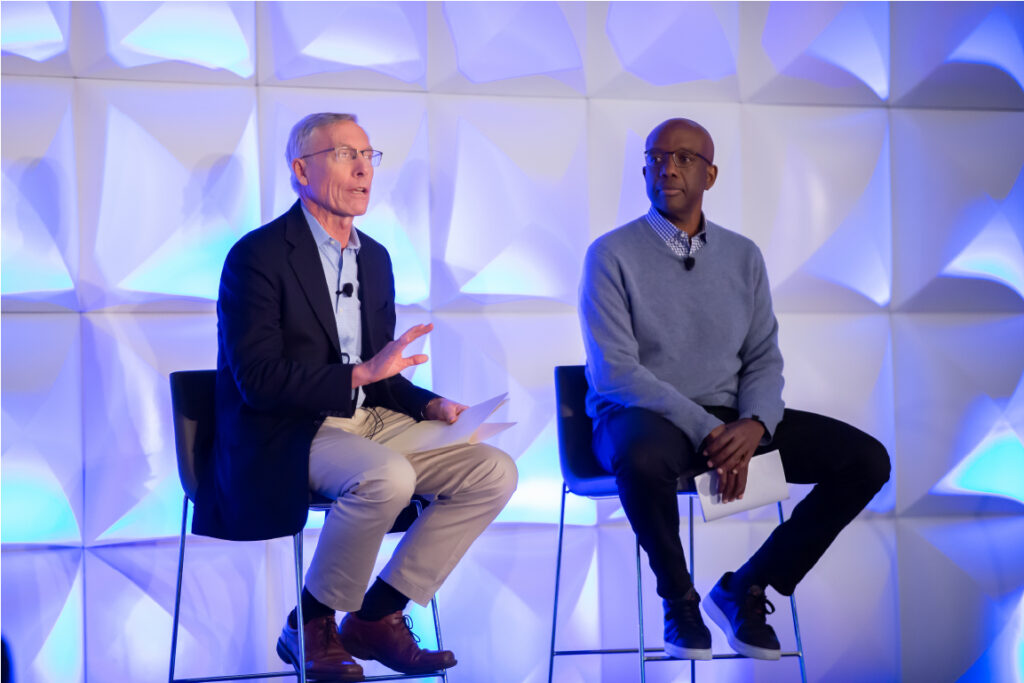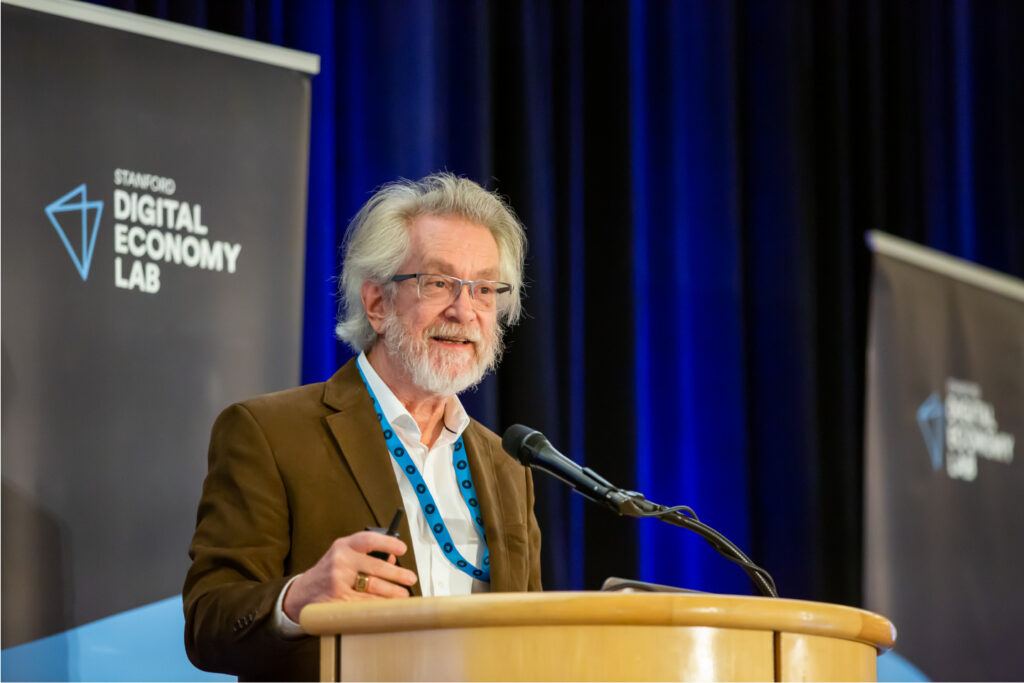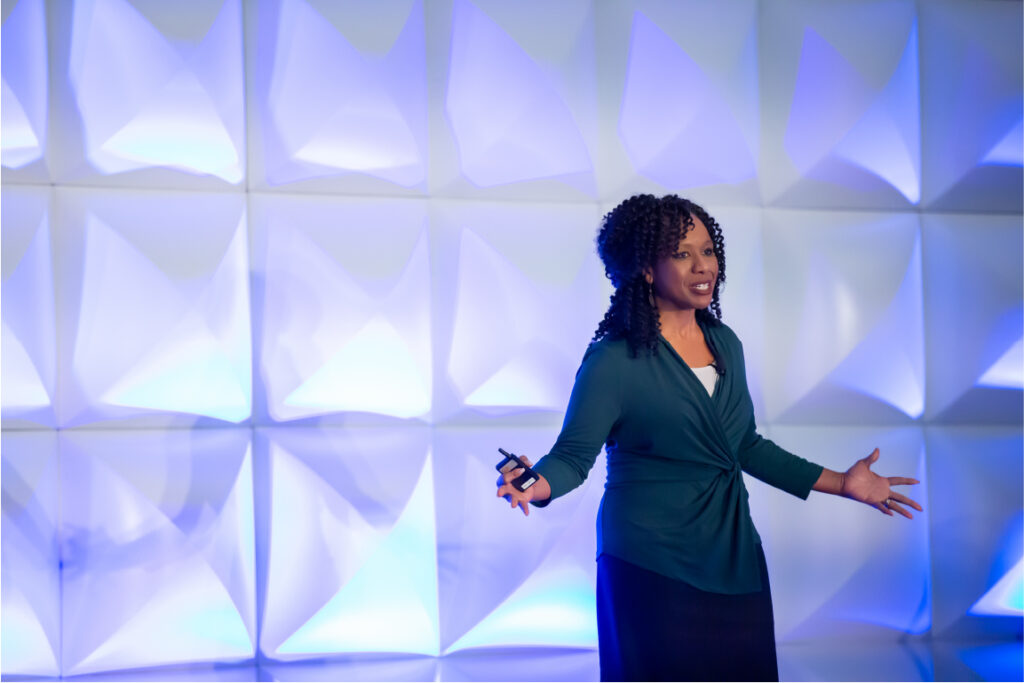Of course, we did so much more than 10 things during the past year, but to capture all the highlights here—including the Lab’s groundbreaking research—would send you into a forever scroll. So we’ve whittled the list down to the top 10 things we did during the past year that helped advance the collective understanding of the digital economy.
To keep up with the Lab and our work, follow us on Twitter and LinkedIn and sign up for email updates about future events.
1 / Essay

In Janurary, Lab Director Erik Brynjolfsson released “The Turing Trap: The Promise & Peril of Human-Like Artificial Intelligence,” in which he warns that “an excessive focus on developing and deploying human-like artificial intelligence can lead us into a trap.” The essay was later published in the spring issue of Daedalus, “AI & Society” (see #3 on our list) and served as the basis for our spring workshop.
Related
The Turing Trap: A conversation with Erik Brynjolfsson on the promise and peril of human-like AI
Brookings Institution
Economists Pin More Blame on Tech for Rising Inequality
The New York Times
AI Shouldn’t Compete With Workers—It Should Supercharge Them
Wired
How to Solve AI’s Inequality Problem
MIT Technology Review
2 / Collaboration

In May of 2022, the ADP Research Institute paused its monthly ADP® National Employment Report in order to refine its methodology and design. Part of that evolution was teaming up with our data scientists to add new perspective and rigor to the report. The newly designed report, which launched in August, uses fine-grained, high-frequency data on jobs and wages to deliver a richer and more useful analysis of the labor market.
Related
ADP National Employment Report
A Key Barometer of the US Job Market Returns With Some Improvements
Bloomberg
3 / Publications

In the spring issue of Daedalus—from the Academy of Arts and Sciences—experts explored various angles of artificial intelligence, including its effects on labor and the economy, its role in law and governance, and what it says about us as humans. The issue, which was edited by James Manyika, featured several contributors from the Lab and Stanford HAI community.
Featured essays
Searching for Computer Vision North Stars
– Fei-Fei Li (Affiliated Faculty) and Ranjay Krishna
Automation, Augmentation, Value Creation & the Distribution of Income & Wealth
– Michael Spence (Advisory Group)
Automation, AI & Work
– Laura D’Andrea Tyson (Digital Fellow) and John Zysman
Socializing Data
– Diane Coyle (Advisory Group)
AI, Great Power Competition & National Security
– Eric Schmidt (Advisory Group)
The Turing Trap: The Promise & Peril of Human-Like Artificial Intelligence
0 Erik Brynjolfsson (Lab Director)
4 / Report

As part of the California 100 initiative, researchers at the Lab and SIEPR examined where the Golden State has been, where it’s at, and where it’s headed when it comes to possible scenarios and policy alternatives for the future. The large-scale report, The Future of Work in California, examines several facets of the California labor market, including its polarized workforce and the erosion of its middle class.
Related|
Future of Work in California website
Stanford Digital Economy Lab and SIEPR to evaluate the future of work in California
5 / Fall conference

As humans continue to develop brilliant new applications of emerging technologies, such as web3, we need to reimagine how our society is organized so that data serves all communities. The speakers and panelists who participated in “Building the New Economy: Data as Capital,” a special Stanford Digital Economy Lab event as part of Stanford Digital Assets Week, explored the feasibility and implications of human-centered web3.
Recap of Building the New Economy: Data as Capital
Playlist: Building the New Economy: Data as Capital
YouTube
6 / Spring workshop

What will the workplace look like in 20 years with the rise of artificial intelligence and other digital technologies? Our daylong workshop, Avoiding the Turing Trap, featured interactive panel discussions and presentations by Lab-affiliated researchers showcasing their recent work. Erik Brynjolfsson opened the event by framing the opportunities and challenges of human-like AI. Nela Richardson, chief economist at ADP, closed the day with her keynote address, “AI’s People Problem.”
Related
Recap: Avoiding the Turing Trap
7 / Fall workshop

In October, the Lab brought together leaders from industry, civil society, and academia to discuss the promise and peril of decentralized digital architecture for our political and economic systems. In the workshop, Decentralized Society: Digitization, Democracy, and Civil Discourse, panelists explored key questions such as new governance strategies, privacy paradigms, business models, and content moderation systems.
Related
Recap: Decentralized Society | Digitization, Democracy, and Civil Discourse
8 / Research

While networking on digital platforms can lead to new job opportunities, a study published earlier this year, A Causal Test of the Strength of Weak Ties, suggests that the specific types of connections job-seekers make online matter in terms of their ability to secure new positions. The project, which was conducted by Erik Brynjolfsson (Stanford), Sinan Aral (MIT), Iavor Bojinov (Harvard), and two LinkedIn employees and recent Stanford and MIT Ph.D. graduates Karthik Rajkumar and Guillaume Saint-Jacques, involved more than 20 million LinkedIn members, who made 2 billion new ties and created 600,000 new jobs over a five-year period.
Related
A Causal Test of the Strength of Weak Ties
Science
Looking For a Job? Some LinkedIn Connections Matter More Than Others
Harvard Business Review
9 / Seminar Series

Throughout the year, the Lab welcomed researchers and experts from all over the world to share their work and insights to a larger, broader audience. You can watch (or re-watch) every one of our Seminar Series talks from the past year on our website and on our YouTube channel.
10 / Competition

The Lab, in collaboration with Stanford HAI and SIEPR, put out a call for student submissions during the summer for innovative policy analysis and solutions that leverage emerging technologies to create jobs. The Emerging Technology Policy Writing Competition awarded a total of $10,000 in prizes to three winning entries. The first place prize went to to Aniket Baksy and Avi Gupta for their policy suggestion, “Expanding AI Adoption is an Opportunity for Job Creation.”
And this also happened…
We welcomed several new faces this year to the Lab, including our first-ever visiting scholar, Sandy Pentland. Among those who also joined us in 2022 include Ruyu Chen, Gabriel Unger, Megan Deason, Andrew Wang, Anthony Weng, David Autor, Angela Chen, Christina Langer, and Ruhani Walia. Visit the team section of our site to view everyone who contributes to the Lab.
In June, Lab affiliated faculty member Susan Athey joined the Department of Justice as chief economist of the antitrust division.
Our research teams published or co-published several papers and journal articles, including the working paper, “How Many Americans Work Remotely?” View all of our research and publications.
We launched The DigDig, our bi-monthly digest of stories—some obscure—making headlines in the digital economy. Sign up to receive The DigDig in your inbox..